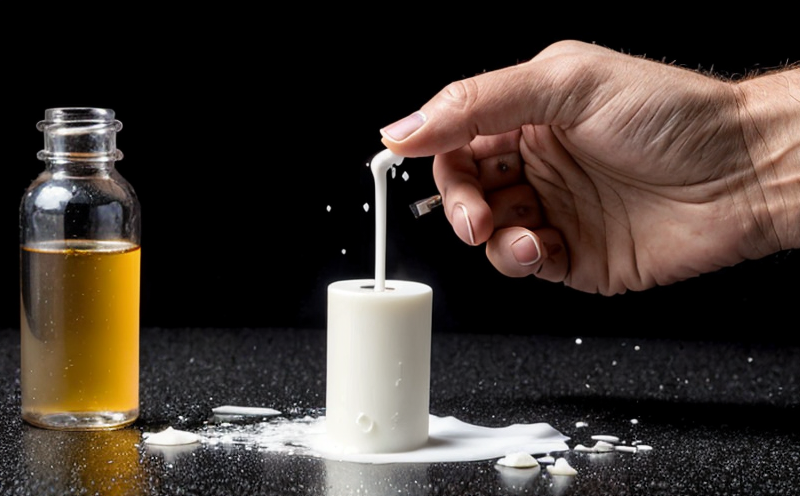USP Dissolution Comparative Bioavailability Testing
USP dissolution comparative bioavailability testing is a critical step in pharmaceutical development and quality assurance. This method evaluates how quickly and completely drug substances are dissolved from solid dosage forms like tablets or capsules under specified conditions.
The primary goal of this test is to ensure that the formulation of the drug will be effective, safe, and consistent with regulatory requirements. The USP (United States Pharmacopeia) provides detailed guidelines for conducting such tests, ensuring that they are conducted consistently across different laboratories and facilities.
During a dissolution test, samples are placed in a solution designed to simulate gastrointestinal conditions. The dissolution medium is typically pH buffered to mimic the gastric or intestinal environment. A specific amount of sample is added to this medium, which is then agitated under controlled temperature conditions (usually 37°C). The drug release rate from each sample is monitored over time using automated sampling techniques.
The test results provide valuable insights into how well a drug formulation performs compared to a reference standard. This comparison helps in optimizing the formulation process and ensuring that the final product meets both regulatory standards and clinical expectations.
For instance, if a new generic version of a drug is being developed, it must pass this test alongside the original brand name product (the reference). The aim is to show that there are no significant differences in bioavailability between the two formulations. This ensures patient safety and efficacy by confirming that the generic drug works just as effectively as its branded counterpart.
Regulatory compliance is paramount in pharmaceutical manufacturing, and failure to meet these standards can lead to delays in product launch or even legal action. By adhering strictly to USP guidelines during dissolution testing, manufacturers ensure that their products are safe, effective, and reliable for consumers worldwide.
Why It Matters
Dissolution comparative bioavailability testing is crucial because it directly impacts the efficacy and safety of pharmaceutical products. Ensuring consistent drug release rates helps maintain therapeutic efficacy while minimizing side effects. Regulatory bodies like the FDA require this test as part of their approval process for new drugs or formulations.
- Consistency: It ensures that each batch of a medication behaves similarly, providing predictable results in terms of absorption and effectiveness.
- Safety: By controlling the rate at which active ingredients enter the bloodstream, potential toxicity risks are minimized.
- Efficacy: Consistent dissolution rates ensure that patients receive their medication as intended, enhancing treatment outcomes.
In addition to these benefits, successful completion of this test can also enhance a company's reputation and trust among healthcare professionals and consumers. It demonstrates commitment to quality and adherence to rigorous scientific standards.
Applied Standards
The USP dissolution comparative bioavailability testing adheres strictly to the guidelines provided by the United States Pharmacopeia, one of the most respected sources for pharmaceutical standards. The specific sections relevant to this test include those dealing with dissolution testing and bioequivalence.
According to USP Chapter 716, the test conditions must be strictly followed, including the type of dissolution medium, temperature control, and sampling intervals. The purpose is to create a consistent environment that accurately reflects real-world drug performance.
The acceptance criteria for these tests are equally stringent. According to USP guidelines, both the new formulation and the reference product should have similar dissolution profiles within specified limits. Any significant differences may indicate issues with either the formulation or stability of the product.
Quality and Reliability Assurance
- Precision: Ensures accurate measurement of drug release at various time points throughout the test.
- Accuracy: Verifies that the results reflect true dissolution behavior rather than experimental error.
- Reliability: Consistent and repeatable outcomes across multiple batches and laboratories.
Quality assurance in USP dissolution testing includes rigorous calibration of equipment, standardization of procedures, and adherence to strict quality control measures. Each step from sample preparation to final analysis is meticulously documented to ensure traceability and reproducibility.





